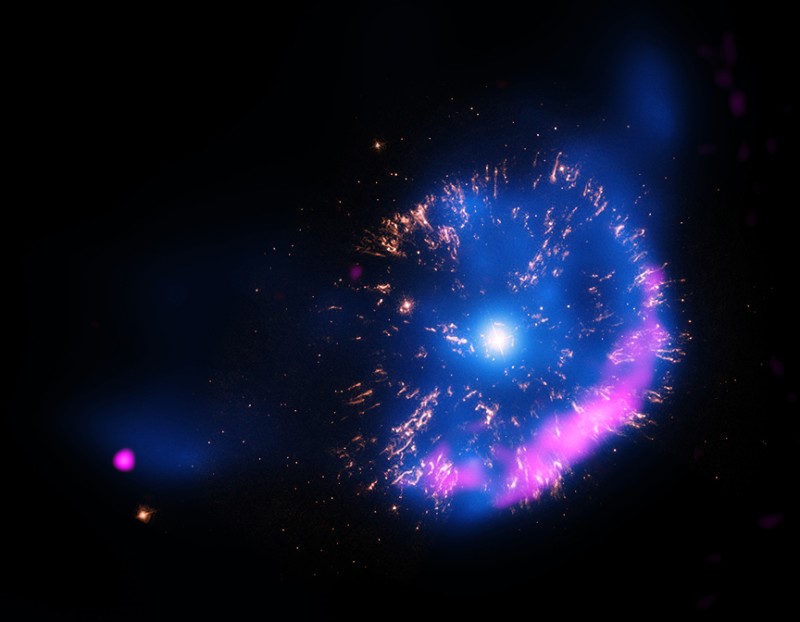
When a star undergoes a nova explosion, it’s effectively shuddering in its final death rattle, a natural process whose galactic ramifications give birth to other stars. By studying said process, scientists hope to form a better understanding of a star’s entire life cycle. The only problem: these events take place over the course of millions of years, making it impossible to observe the process in anything but fragmented snapshots.
But now, astronomers from Japan’s RIKEN SPring-8 Center have examined a first-of-its-kind detailed “time lapse” image of a classic nova explosion using multiple layers of optical data taken of the GK Persei nova — a binary star that underwent a nova explosion in 1901. Led by chief scientists Dai Takei, the venture studied optical data of GK Persei taken from NASA’s Hubble Space telescope (yellow), X-rays from NASA’s Chandra Observatory (blue), and radio data from the National Science Foundation’s Very Large Array (pink) over a 13 year period. The resulting image shows all spectrums superimposed upon one another.
The GK Persei nova’s position as a classical nova in a binary star system that’s only 1,500 light years away made it the perfect specimen for the study, stated Takei, explaining that the process is still ongoing and close enough to view with a precise unlike any other up to this point.
Matter from a red dwarf star continues to burn on its surface and is ejected onto the surface of its dead companion — a white dwarf —where it accumulate until it reaches a critical mass, and then the thermonuclear runaway stars, eject the outer layer in a massive explosion. Because the process is recent and rapidly expanding, the astronomers were able to examine snapshots of the nova between 2000 and 2013, observing that the nova remnant expanded by 90 billion kilometers during the 13 year time period.
The time lapse image also demonstrates that the X-ray luminosity of the nova remnant decreased by 40%, giving scientists a closer approximation of what the nova’s environment is really like. Similarly, the radio data reveals emissions from electrons were accelerated due to the high energy of the nova’s shockwave, whereas the optical data reveals clumped matter ejected in the explosion.
Source: Sciencedaily
Advertisement
Learn more about Electronic Products Magazine





